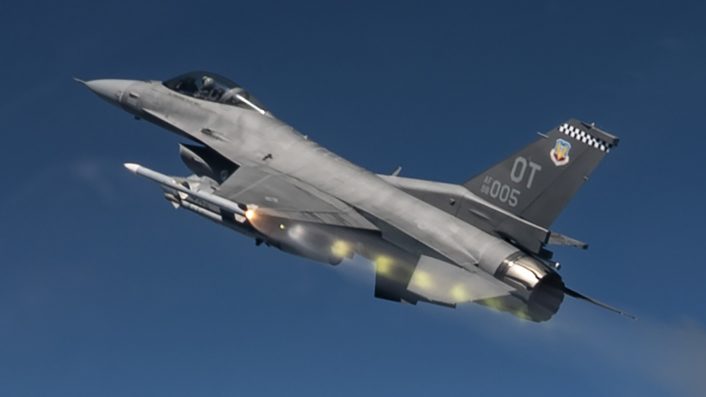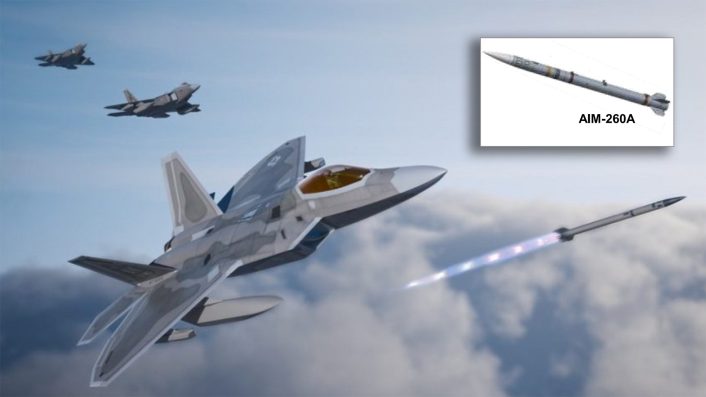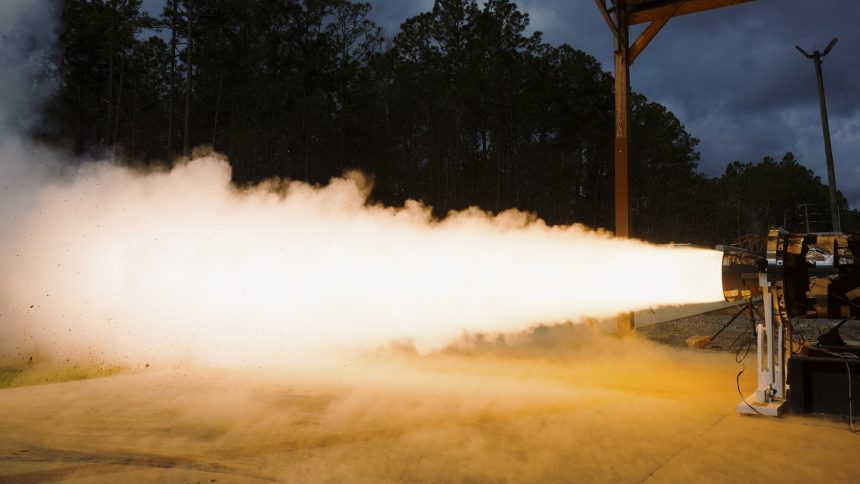Highly Loaded Grain (HLG) Solid Rocket Motors allow extended range and customized thrust profiles with the same propellant and the same size rocket motor.
Anduril and Raytheon announced on Oct. 7, 2025 they conducted a static fire test of the former’s Solid Rocket Motor (SRM) featuring a Highly Loaded Grain (HLG) configuration. Anduril described the test as a “major advancement in propulsion technology for air-to-air weapons,” which comes amid both a broad push in propulsion systems for missiles, and the development of long-range missiles themselves to match the ones fielded by Russia and China.
While Anduril designed and developed the HLG-configuration motor using technology from Naval Air Weapons Station China Lake, Raytheon’s Advanced Technology Team “provided crucial technical expertise and oversight throughout the development, design and execution phases of the test.” Neither company specified when the test took place.
This suggests Raytheon certifying the size and dimensions of the HLG SRM, beside setting the expected performance criteria like burn rate and thrust needed for air-to-air missiles. Both companies were also under contract with the Air Force Research Laboratory Munitions Directorate.
Notably, Raytheon, part of RTX, is the developer and manufacturer of AIM-9 Sidewinder and AIM-120 AMRAAM series of missiles.
The HLG design was developed and built by Anduril using technology from Naval Air Weapons Station China Lake. The design enables significantly greater volumes of energetic propellant, delivering increased specific impulse and enhanced motor performance. These improvements…
— Anduril Industries (@anduriltech) October 7, 2025
JATM, energetics and propulsion systems research
Lockheed Martin has been developing the AIM-260 JATM (Joint Advanced Tactical Missile), whose renderings so far have suggested it is not an air-breathing system. HLG propellant technology falls within the ‘energetics’ area, which allows extended range and customized thrust profiles with the same propellant and the same size rocket motor.
GE Aerospace also recently shed more light on its hypersonic propulsion programs, with the testing of a Solid Fuel Ramjet (SFRJ) and a dual-mode rotation-detonation combustion ramjet (DMRJ). On May 6, Colorado-based Ursa Major also announced multiple static fires tests of a 5 inch solid rocket motor in a HLG configuration.

The U.S. was found to have lagged in energetics beginning in the 1990s, with China having surged ahead, owing to both a drop in a R&D expenditure and the Pentagon’s efforts to increase the accuracy of weapons, rather than their range or explosive force.
The Energetics Technology Center (ETC), a nonprofit research group that does work for the government, touched upon the issue in a now removed 2021 Pentagon-commissioned report. “This is a case where we could potentially be beaten over the head with our own technology,” Bob Kavetsky, head of the Energetic Technology Center, told Forbes in Mar. 2023.
The test
Anduril said that the design tested “enables significantly greater volumes of energetic propellant, delivering increased specific impulse and enhanced motor performance,” further adding “these improvements translate directly into extended range and greater tactical advantage.” This also follows Anduril commissioning its full-scale $75 million SRM production facility in Mississippi that affords “the much-needed scale, resiliency, and innovation to allied SRM manufacturing.”
— Anduril Industries (@anduriltech) August 5, 2025
Raytheon, meanwhile, said that the test was a part of a broader “response to the increasing global demand for munitions,” for which the company has been “working with domestic and international partners to enhance U.S.-based rocket motor manufacturing capacity.”
Anduril Industries’ senior vice president Lt. Gen. Neil Thurgood called designing and firing a Highly Loaded Grain rocket motor “one of the most technically demanding tasks in the solid rocket motor industry.” The test demonstrates Anduril’s “ability to deliver high-performance propulsion solutions in a domain long defined by a small set of providers.”

Missile propulsion and Beyond Visual-Range Warfare
We are assuming the JATM is going to be a non-air-breathing engine, unlike the Meteor BVRAAM, based on renditions published on air force budget documents, which did not show air intakes. There is no information yet on the missile’s seeker, navigation, guidance and propulsion configuration.
A working knowledge of missile technology suited for beyond-visual ranges of over 300 km, especially with flexible kill chains that can also keep the launching aircraft safe, tells us that the munition must have an active radar seeker programmed to activate in its terminal stage. In the post-launch and cruise phase, the missile must be capable of receiving mid-course guidance data from either the launching jet or an external source like an AEW&C aircraft through a two-way data link.
External guidance keeps the carrier jet safe by allowing it to keep its radar turned off in a heavy electronic warfare jamming environment. An AEW&C aircraft is even safer, operating farther away from the core battlespace. As for the propulsion system, a dual-pulse rocket motor that can fire a second time during its descent towards the target, following the initial climb after launch, maintains the missile’s speed, velocity, kinetic energy and thereby allows a shorter travel time to the target.

Medium and long-range missiles, like the AIM-120 AMRAAM, have been known to utilize this ‘lofting’ technique to improve their range. Upon launch, it climbs up in a parabolic arc into rarified air at high altitudes. The lack of air resistance and little drag allows greater kinetic energy, and a wider target scan area with an active seeker when it begins descending.









